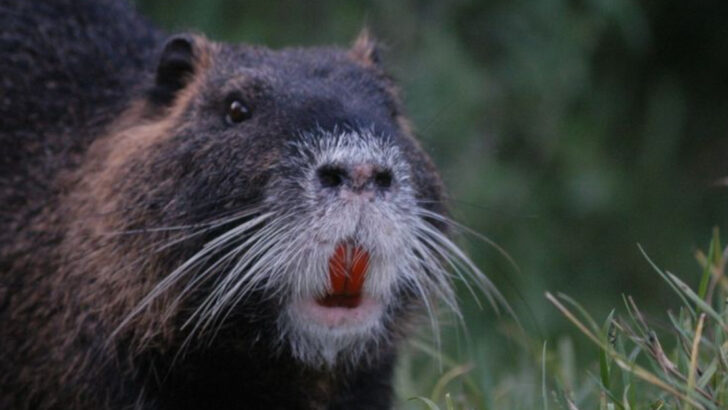Louisiana’s wetlands are wild sanctuaries bursting with untamed wonder!
Dive into a realm where every ripple whispers ancient secrets and every murmur echoes a vibrant past. This is nature at its rawest, where water and earth collide in spectacular fashion.
Picture moss-draped cypress trees guarding hidden channels, mysterious shadows dancing beneath murky waters, and life unfolding in mesmerizing patterns. Playful otters leap with infectious energy, stealthy alligators glide like timeless guardians, and brilliant birds set the sky ablaze with color.
Step into this mesmerizing world and feel the pulse of nature in every heartbeat. Each discovery becomes a thrilling encounter with the wild, inviting you to marvel at life’s endless surprises.
Uncover 20 fascinating animals that call Louisiana’s wetlands home. Prepare for an adventure that will ignite your spirit and leave you craving more of nature’s untamed brilliance.
Brace yourself for a journey that redefines the wild.
American Alligator
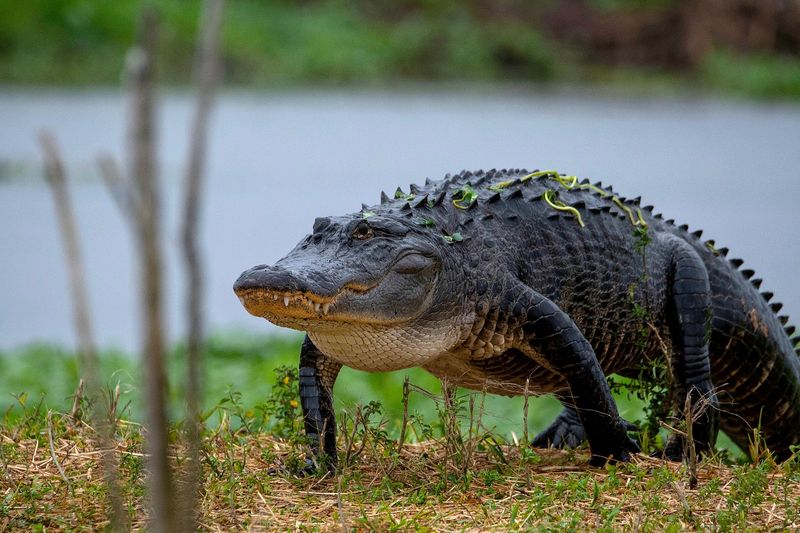
The American alligator is a symbol of the southern U.S. wetlands. These formidable reptiles can grow up to 15 feet long and weigh over 1,000 pounds. Alligators are known for their powerful jaws and a mouthful of sharp teeth, making them apex predators in their habitat. Interestingly, they play a crucial role in maintaining the wetland ecosystem by controlling the population of other species. During the nesting season, female alligators build large nests and guard their eggs fiercely. Observing these ancient reptiles in their natural habitat is a true spectacle.
Great Blue Heron
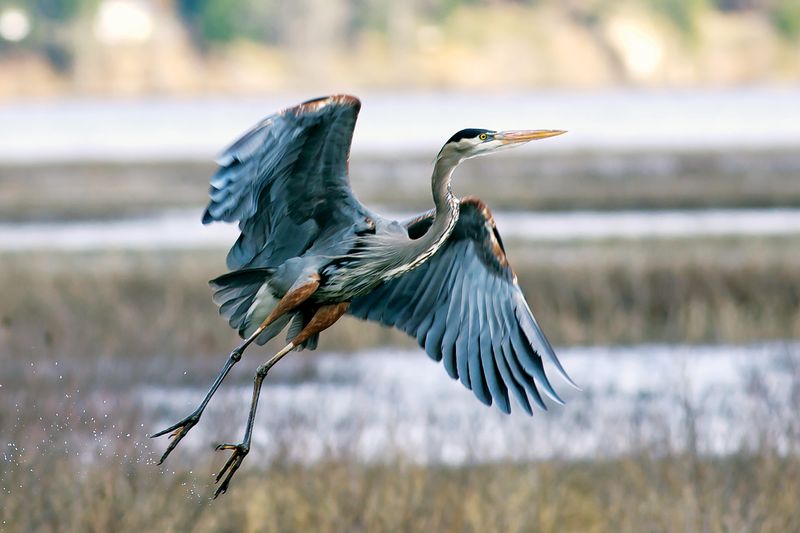
The Great Blue Heron is a striking bird often seen wading through Louisiana’s wetlands. With its long legs and sharp beak, it’s perfectly adapted to hunting fish and small aquatic creatures. Standing over four feet tall, this bird’s graceful movements are mesmerizing to watch. Its blue-gray feathers and striking yellow eyes make it easily recognizable. During breeding season, herons gather in large colonies, building nests high in the trees. Their deep, croaking calls echo through the wetlands, adding to the area’s vibrant symphony.
Bald Cypress Tree Frog
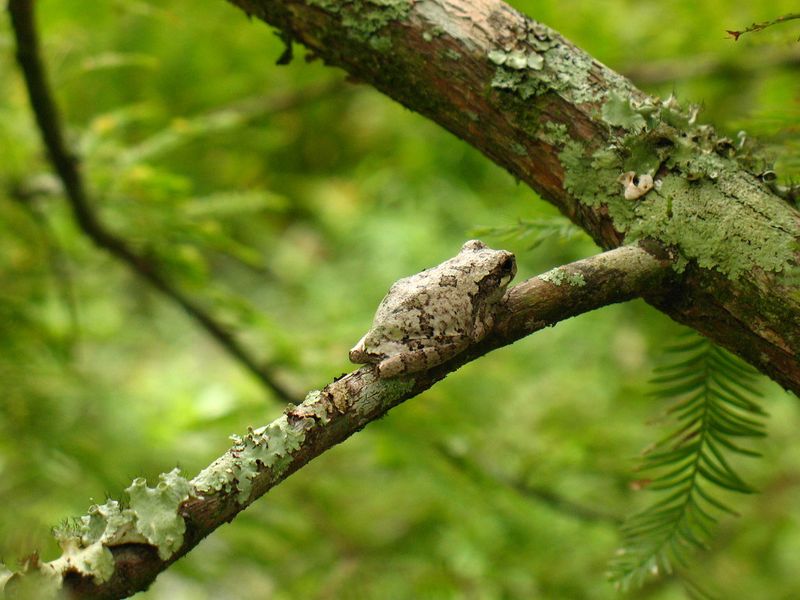
The Bald Cypress Tree Frog is a tiny but vibrant inhabitant of Louisiana’s wetlands. These frogs are adept climbers, often found perched on the branches of cypress trees. They are known for their distinctive calls, a melodious sound that punctuates the humid air. With their green bodies and spotted patterns, they blend seamlessly into the lush surroundings. Tree frogs play an essential role in the ecosystem by controlling insect populations. Despite their small size, their presence is a key indicator of a healthy wetland environment.
Nutria
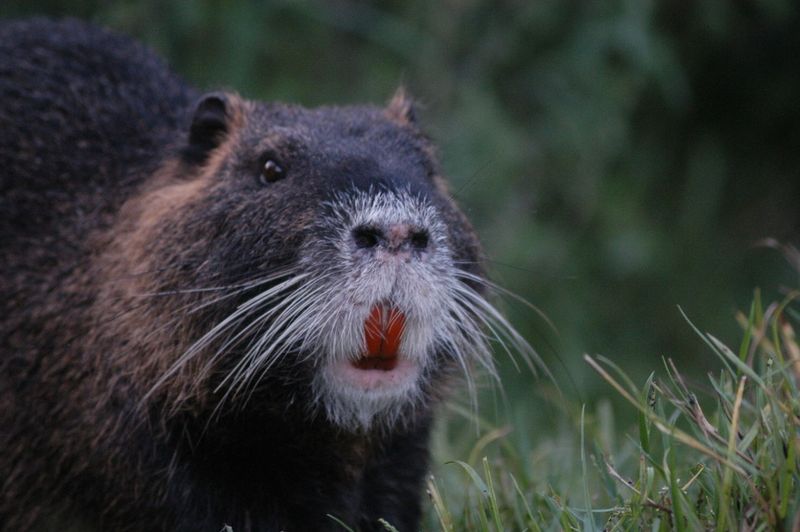
Nutria, or coypu, are large, semi-aquatic rodents that thrive in Louisiana’s wetlands. Originally from South America, these animals have adapted well to their environment. They are known for their orange incisors and webbed hind feet, making them excellent swimmers. Nutria primarily feed on aquatic plants but can also affect the ecosystem by overgrazing. Their burrowing habits can weaken levees and embankments, posing challenges for wetland conservation. Despite being considered pests, nutria are fascinating creatures that highlight the complex dynamics of wetland ecosystems.
Prothonotary Warbler
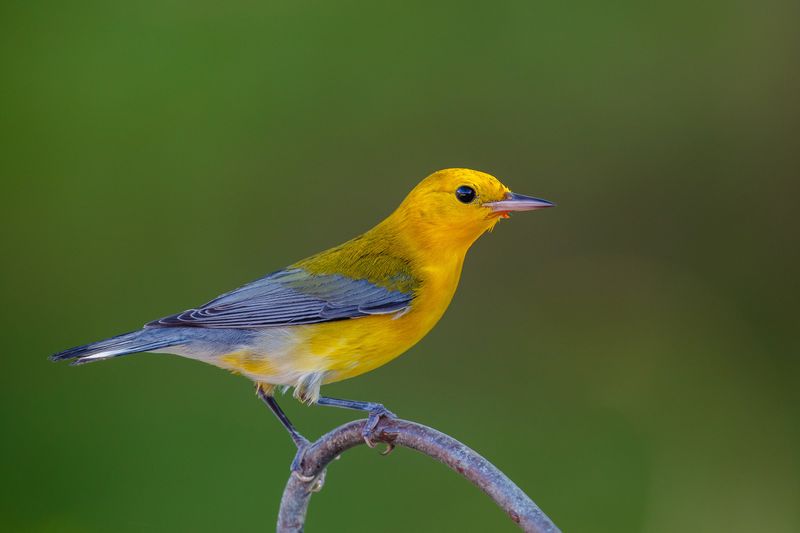
The Prothonotary Warbler is a small songbird known for its vibrant yellow plumage and melodious song. Found in the wooded swamps of Louisiana, these warblers are a delight to birdwatchers. They prefer to nest in cavities, often using old woodpecker holes. The presence of these birds indicates a healthy forested wetland, as they require specific tree species for nesting. Conservation efforts are vital for their survival, as habitat loss poses a significant threat. Watching these energetic birds flit through the trees is a true joy.
American Mink
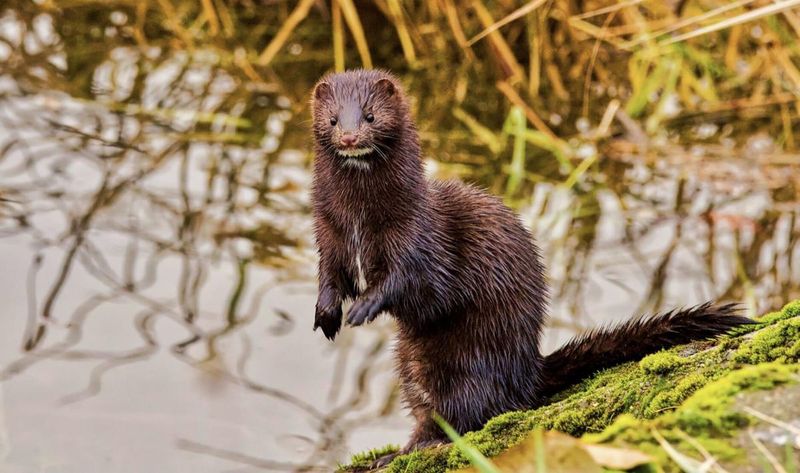
The American Mink is a sleek, agile predator found within Louisiana’s wetlands. With its rich, dark fur and slender body, it moves silently through its habitat. Minks are expert hunters, preying on fish, birds, and small mammals. Their presence is a sign of a well-balanced ecosystem, as they help control prey populations. Minks are solitary creatures, often seen darting through the reeds at the water’s edge. Observing their hunting prowess in the wild is a fascinating experience, showcasing the intricate balance of wetland life.
Swamp Rabbit
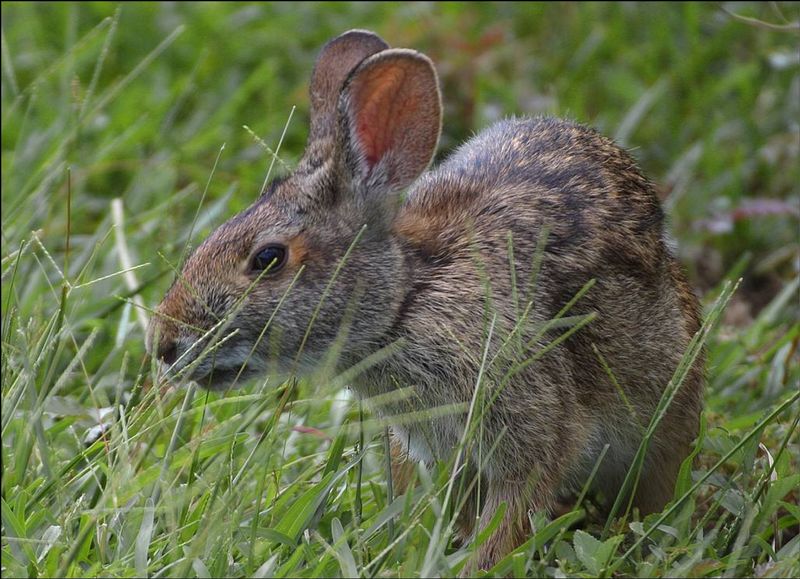
The Swamp Rabbit, larger than its cottontail cousins, is a common sight in Louisiana’s wetlands. These rabbits thrive in the dense vegetation of swamps and floodplains. Known for their strong swimming abilities, they often take to the water to escape predators. Swamp Rabbits feed on a variety of plants, playing a crucial role in the food chain. Their keen senses and agile reflexes make them adept at avoiding danger. Spotting these shy creatures requires patience, but their presence is an indication of a thriving wetland ecosystem.
Eastern Indigo Snake
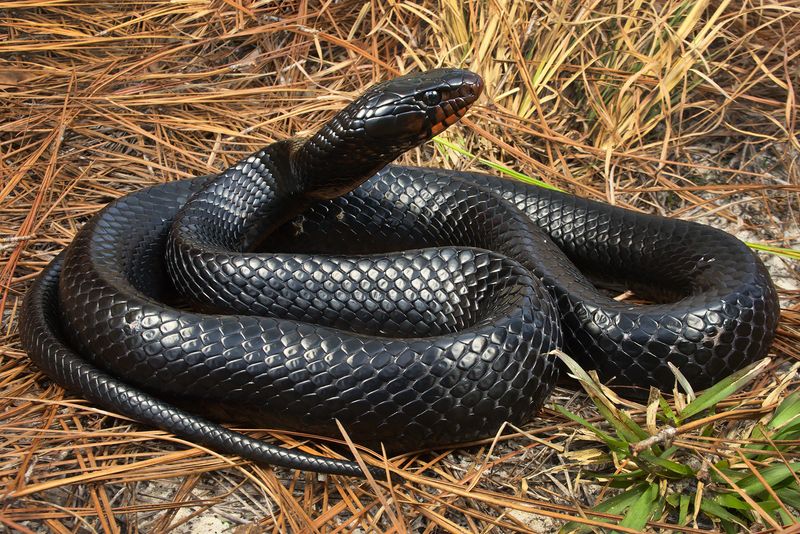
The Eastern Indigo Snake is an impressive reptile found in Louisiana’s wetlands. Known for its glossy, blue-black scales, it is North America’s longest snake. These non-venomous snakes are important predators, feeding on a variety of animals, including other snakes. They are often seen slithering through the underbrush, displaying remarkable agility. Indigo Snakes are crucial for maintaining ecological balance, helping control the populations of their prey. Conservation of their habitat is essential, as they are a threatened species. Their presence adds mystique to the wetland environment.
Roseate Spoonbill
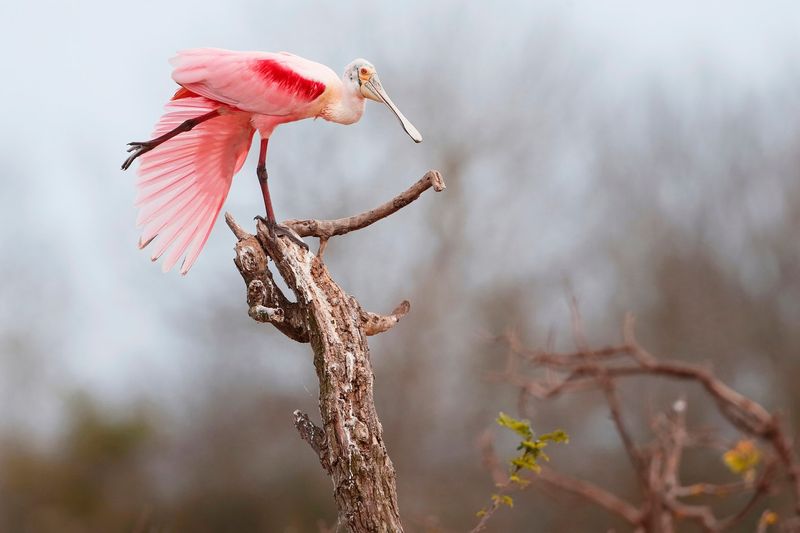
The Roseate Spoonbill is a stunning bird, easily recognized by its pink plumage and spoon-shaped bill. Found wading through the wetlands, these birds feed by sweeping their bills side-to-side to catch small fish and crustaceans. Their vivid color is a result of their diet, rich in carotenoids. Spoonbills nest in colonies, often sharing space with other wading birds. Their presence adds a splash of color to the wetland scenery. Observing a flock of Roseate Spoonbills in flight is a breathtaking sight, showcasing the beauty of nature.
White-tailed Deer
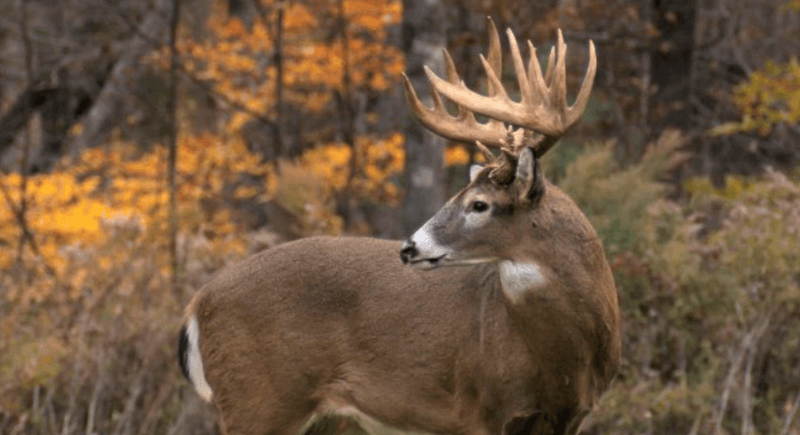
White-tailed Deer are adaptable creatures found throughout Louisiana, including its wetlands. These graceful animals are known for their reddish-brown coats and distinctive white tails. Deer play a vital role in their ecosystem, as their grazing helps shape plant communities. Their presence supports a variety of predators, maintaining the food web. Deer are often seen grazing at the forest edges or moving silently through the trees. Their ability to thrive in diverse habitats makes them a symbol of adaptability and resilience in the wild.
Alligator Snapping Turtle
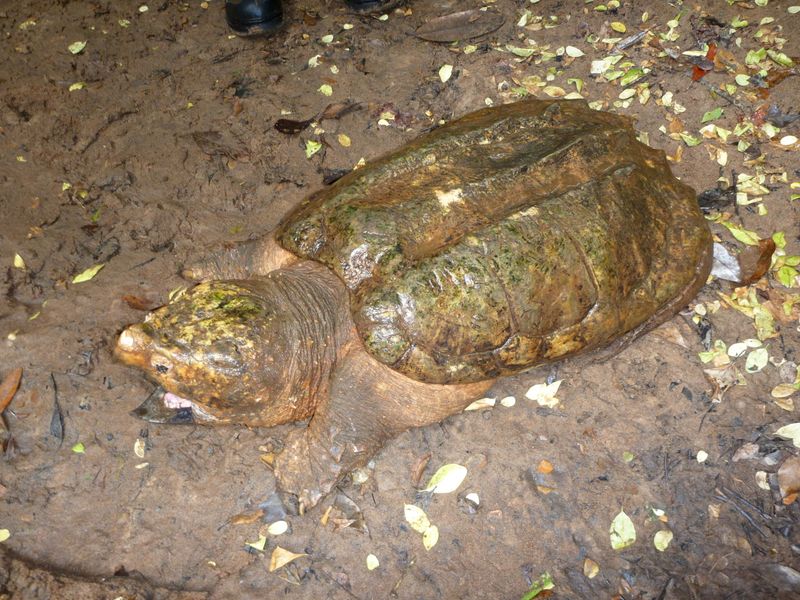
The Alligator Snapping Turtle is a remarkable inhabitant of Louisiana’s wetlands. Known for its prehistoric appearance, this turtle can weigh over 200 pounds. It is the largest freshwater turtle in North America. With its powerful jaws and camouflaged shell, it ambushes prey like fish and frogs. This turtle’s tongue mimics a worm to lure unsuspecting victims. While mostly aquatic, they occasionally venture onto land. Observing these ancient creatures offers a glimpse into a world that has remained unchanged for millions of years.
Northern River Otter
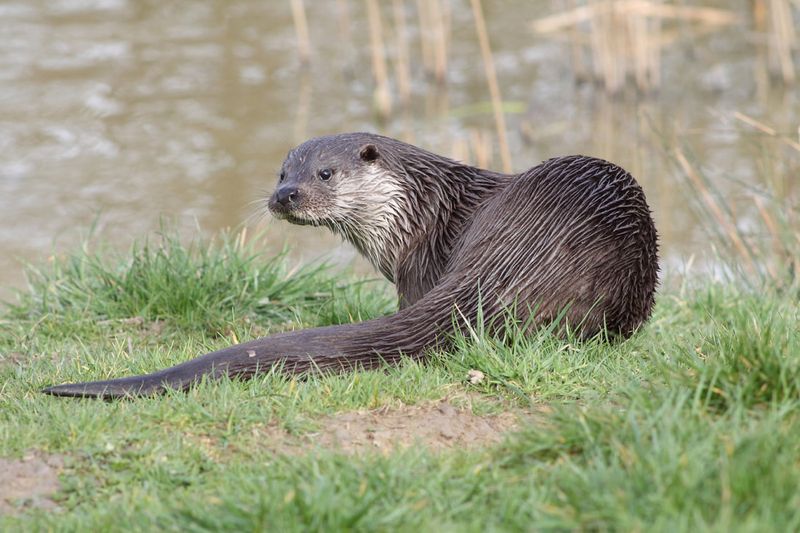
The Northern River Otter is a playful and agile mammal found in Louisiana’s wetlands. These otters are excellent swimmers, with webbed feet and streamlined bodies. They feed on fish, crustaceans, and small mammals, playing a key role in controlling aquatic populations. Otters are social animals, often seen in groups sliding down muddy banks or playing in the water. Their playful behavior and curious nature make them a delight to observe. Protecting their habitat ensures the continued health of wetland ecosystems.
Barred Owl
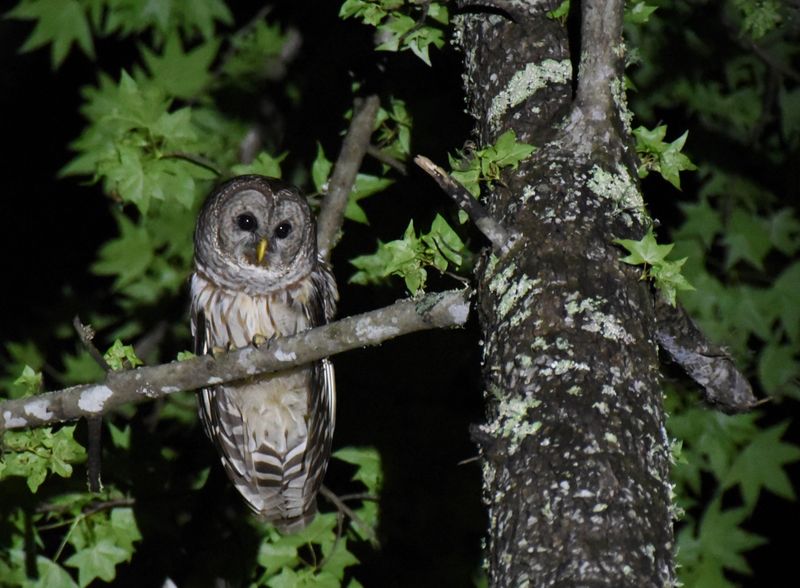
The Barred Owl is a nocturnal predator found in the forested wetlands of Louisiana. Known for its distinctive “Who cooks for you?” call, this owl hunts small mammals and birds. With its round face and dark eyes, it is a master of camouflage. Barred Owls are typically seen perched silently in trees, scanning for prey below. Their presence is a testament to the rich biodiversity of the wetlands. These owls are vital for controlling rodent populations, contributing to the ecological balance of their habitat.
Red-eared Slider
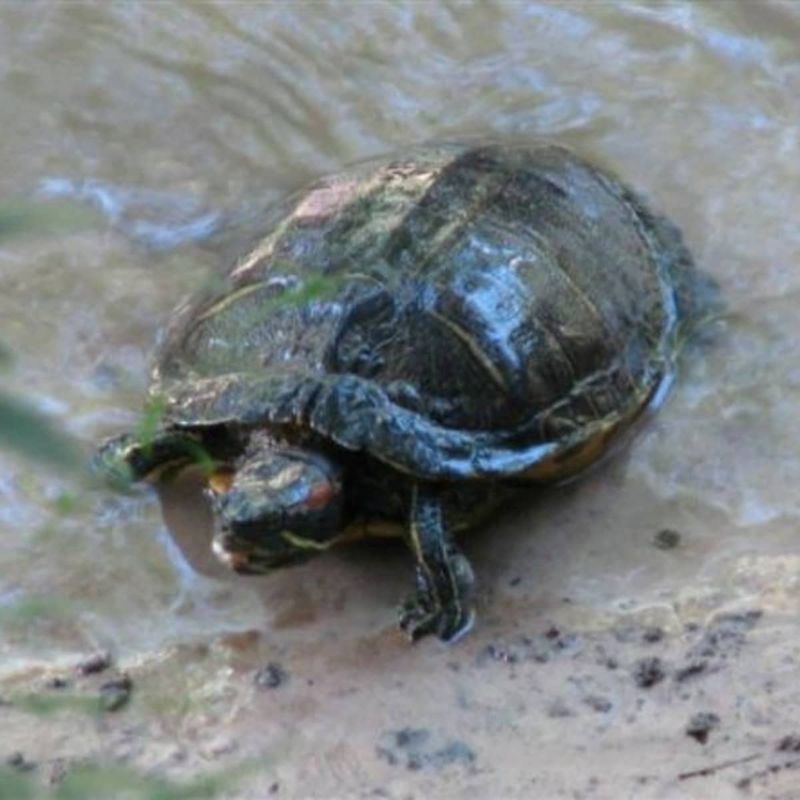
The Red-eared Slider is a common turtle species found in Louisiana’s wetlands. Recognizable by the distinctive red mark behind each eye, these turtles are often seen basking on logs. They are omnivorous, feeding on aquatic plants, insects, and small fish. Red-eared Sliders play a role in maintaining healthy wetland ecosystems by controlling aquatic vegetation. Their adaptability to various environments has made them popular in the pet trade. Watching these turtles as they bask in the sun is a serene and calming sight.
Cottonmouth Snake
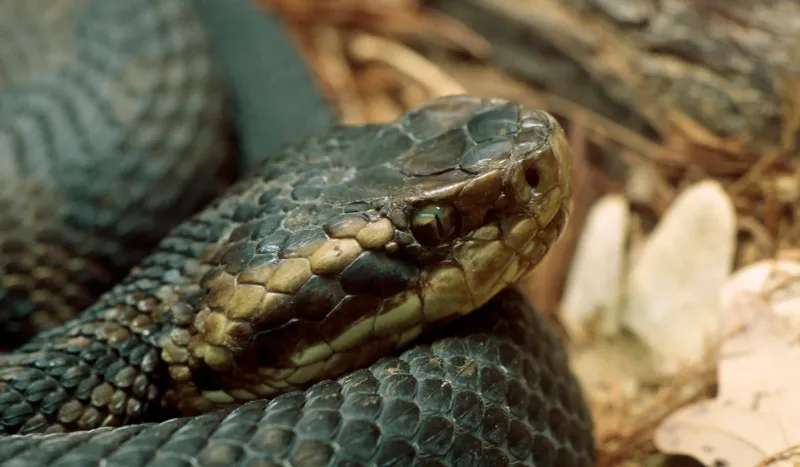
The Cottonmouth Snake, also known as Water Moccasin, is a venomous snake found in Louisiana’s wetlands. Recognizable by its thick body and distinctive white mouth, it prefers slow-moving waters. Cottonmouths are excellent swimmers and feed on fish, frogs, and small mammals. While they are venomous, they play a critical role in controlling prey populations. Observing these snakes from a safe distance offers insight into the delicate balance of wetland ecosystems. Their presence underscores the complexity and diversity of life in these environments.
Green Anole
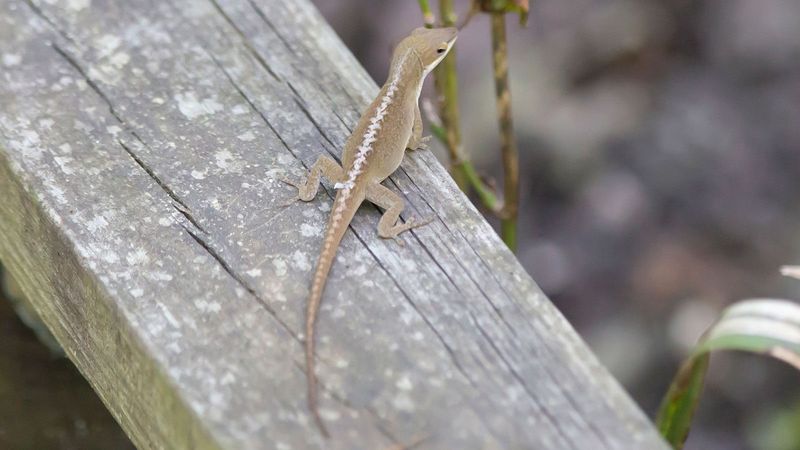
The Green Anole is a small lizard commonly found in Louisiana’s wetlands. Known for its ability to change color, it ranges from bright green to brown. Anoles are insectivorous, playing a vital role in controlling insect populations. Males are territorial, often seen displaying their dewlaps to assert dominance. These lizards are agile climbers, frequently spotted on trees and shrubs. Their adaptability to changing environments makes them a fascinating subject of study. Observing their behavior provides insights into the complex web of wetland life.
American Bullfrog
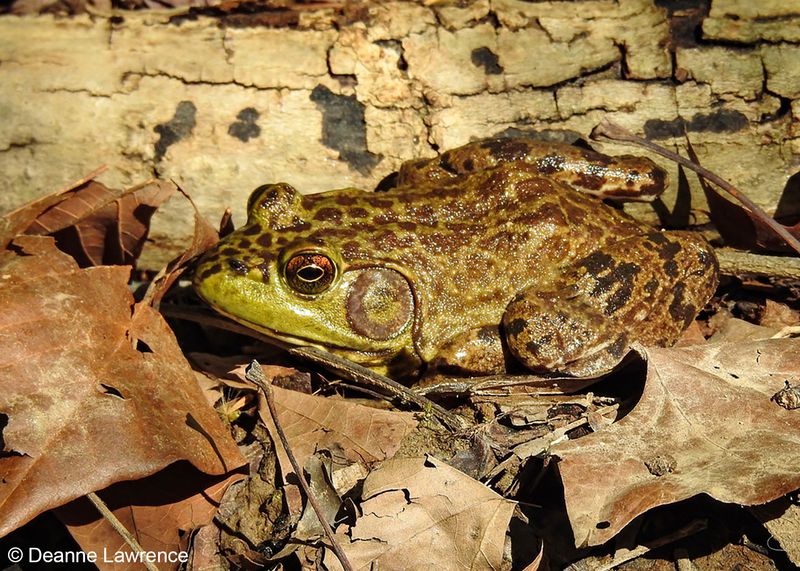
The American Bullfrog is a well-known amphibian inhabiting Louisiana’s wetlands. Known for their deep, resonant croaks, they are a prominent part of the wetland soundscape. Bullfrogs are one of the largest frog species, feeding on insects, fish, and even small mammals. Their powerful hind legs make them excellent jumpers. Bullfrogs play a significant role in aquatic ecosystems as both predator and prey. Observing them in their natural habitat highlights the dynamic interactions within the wetlands. Conservation efforts help maintain their populations and habitat.
Eastern Mud Turtle
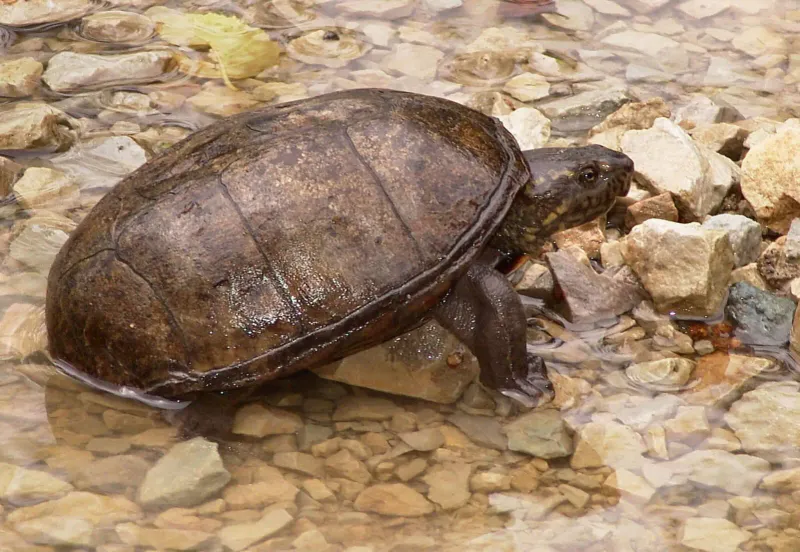
The Eastern Mud Turtle is a small, unassuming inhabitant of Louisiana’s wetlands. These turtles have a preference for slow-moving, muddy waters, where they hunt for insects and small aquatic creatures. Their shells are smooth and often coated in mud, providing excellent camouflage. Mud Turtles are important for maintaining the health of wetland ecosystems by controlling insect populations. Despite their small size, they contribute significantly to the biodiversity of the area. Observing these turtles requires a keen eye and patience to spot their subtle movements.
Wood Duck
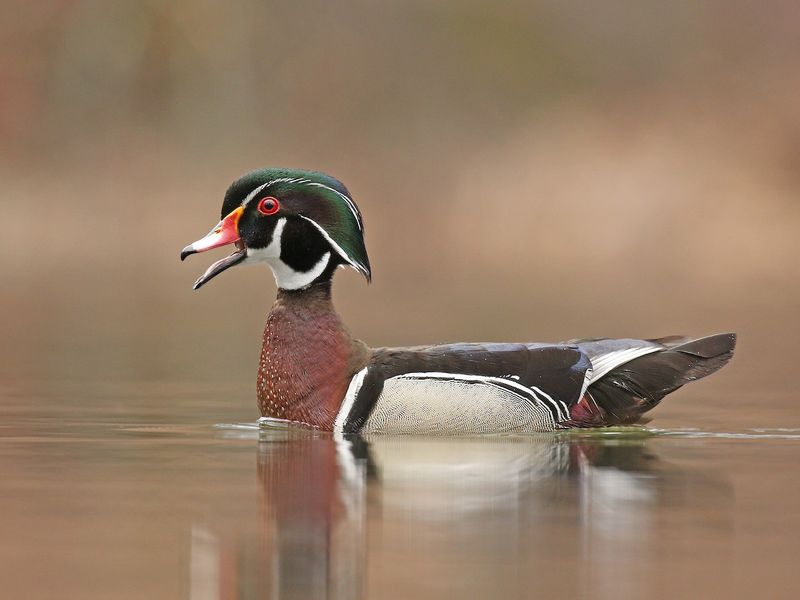
The Wood Duck is one of the most colorful and visually stunning birds in Louisiana’s wetlands. Males boast iridescent plumage with striking patterns, while females are more subdued in color. These ducks prefer wooded swamps and nest in tree cavities. Their presence is an indicator of a healthy wetland ecosystem. Wood Ducks feed on aquatic plants, insects, and seeds, playing a role in nutrient cycling. Observing their courtship displays and vibrant colors is a delightful experience for bird enthusiasts. Conservation efforts support their thriving populations.
American Bittern
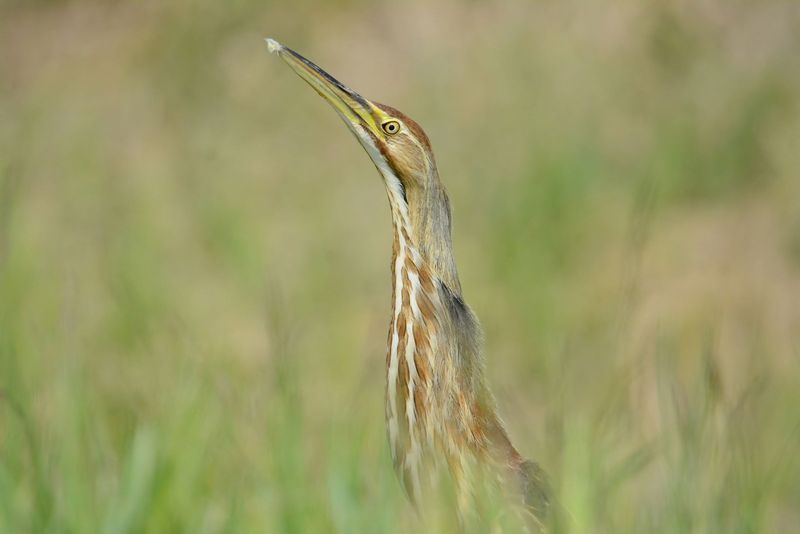
The American Bittern is a master of disguise, blending seamlessly into the reeds of Louisiana’s wetlands. Known for its distinctive booming call, this bird is a challenge to spot. Bitterns are solitary hunters, feeding on fish, insects, and amphibians. Their presence is a testament to the health of the wetland ecosystem, as they require dense, undisturbed habitats. Observing a bittern requires patience and a keen eye, as they often remain motionless for long periods. Their elusive nature adds to the intrigue and allure of wetland wildlife.

